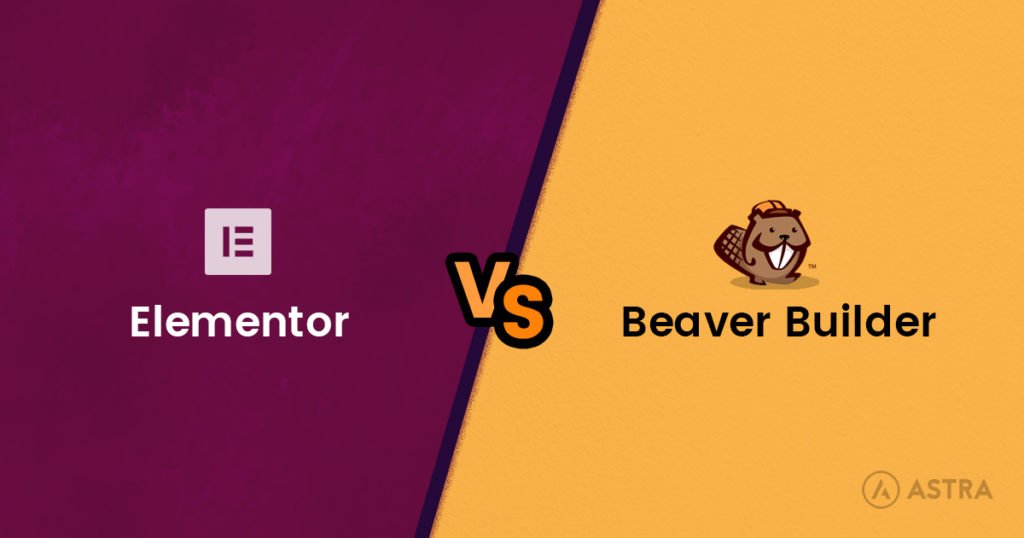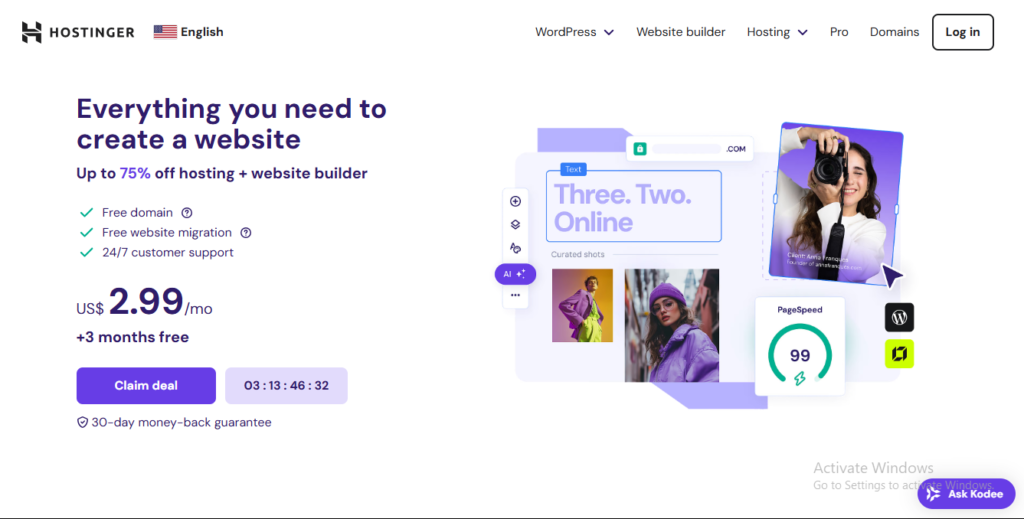Introduction: What is Elementor?
In the world of WordPress, creating stunning and professional-looking websites used to require advanced coding skills. But with the rise of drag-and-drop page builders, anyone can design a website without touching a single line of code. Among these builders, Elementor has emerged as one of the most powerful and popular choices.
Elementor is a WordPress page builder plugin that allows users to create visually appealing websites using an intuitive drag-and-drop interface. Launched in 2016, Elementor quickly gained popularity for its ease of use, flexibility, and powerful design capabilities. As of 2025, it has over 13 million active installations, making it the most widely used WordPress page builder in the market.
Why is Elementor So Popular?
The main reason behind Elementor’s success is its user-friendly interface. Unlike traditional WordPress themes that rely on complex settings and coding, Elementor gives users full control over their website’s design in real-time. You can simply drag widgets, adjust settings, and see changes instantly.
Another standout feature is its pre-built templates. Elementor offers hundreds of professionally designed templates that users can import with a single click. This is perfect for beginners who want a beautiful website without spending hours on design.
Who Can Benefit from Elementor?
Elementor is designed for everyone—from beginners building their first website to professional web designers and agencies working on high-end projects. Some of its most common users include:
- Bloggers & Content Creators – Easily create stylish blog layouts.
- Small Business Owners – Build an online presence without hiring a developer.
- Freelancers & Web Designers – Save time with drag-and-drop tools.
- eCommerce Store Owners – Design custom product pages with WooCommerce integration.
Elementor in 2025: Still the Best?
As we move into 2025, Elementor continues to evolve with new updates, improved performance, and additional features. With Elementor Pro, users can access advanced tools like theme building, dynamic content, and custom popups.
But the real question is—is Elementor still the best page builder in 2025? Let’s explore its features, pricing, and performance in the next sections to find out!
Key Features of Elementor in 2025
Elementor continues to be one of the most powerful and user-friendly page builders for WordPress. Over the years, it has evolved significantly, and in 2025, it offers even more advanced features to help users create stunning, high-performing websites. Below are the key features that make Elementor stand out.
1. Drag-and-Drop Editor
One of Elementor’s biggest strengths is its intuitive drag-and-drop interface. Users can design web pages visually without writing a single line of code. With real-time previews, changes can be seen instantly, making the design process smooth and efficient.
2. Pre-Designed Templates & Widgets
Elementor offers a vast library of pre-built templates for landing pages, blogs, portfolios, and eCommerce stores. In 2025, new AI-powered templates have been introduced, allowing users to generate custom designs based on their niche. Additionally, Elementor provides over 100+ widgets for adding text, images, buttons, sliders, forms, and more.
3. Advanced Theme Builder
Unlike traditional page builders, Elementor allows full control over website themes. With the Theme Builder, users can customize headers, footers, single post layouts, and archive pages. In 2025, Elementor has enhanced its Theme Builder with global styles and dynamic content support, making website design more cohesive and efficient.
4. Popup Builder & Form Integrations
Elementor’s Popup Builder is perfect for creating lead generation forms, promotions, and login popups. With seamless integrations for email marketing tools like Mailchimp, HubSpot, and ConvertKit, users can build automated workflows effortlessly.
5. AI-Powered Design Suggestions
A new feature in 2025 is Elementor AI, which provides smart design recommendations based on website trends and user behavior. This helps users improve layouts, color schemes, and content placement.
6. SEO & Performance Optimization
Website speed is a critical ranking factor, and Elementor has introduced lighter code output, optimized CSS, and lazy loading to improve performance. Additionally, it integrates seamlessly with SEO plugins like Rank Math and Yoast.
7. WooCommerce Builder for Online Stores
For eCommerce users, Elementor offers a WooCommerce Builder, making it easy to design custom product pages, checkout flows, and category layouts. The new AI-driven product recommendations help increase conversions.
With these advanced features, Elementor remains a top choice for WordPress users in 2025. 🚀
Elementor Free vs. Elementor Pro: What’s the Difference?
Elementor is one of the most popular WordPress page builders, offering both a free version and a premium Pro version. While the free version provides essential tools for website design, Elementor Pro unlocks advanced features that take customization to the next level. Let’s break down the key differences between the two.
1. Features: What You Get with Each Version
✅ Elementor Free
- Drag-and-drop editor for easy page building
- 40+ basic widgets (like headings, images, buttons, and text)
- Responsive design controls
- Mobile editing capabilities
- Basic templates for quick site creation
✅ Elementor Pro (Includes everything in Free + additional features)
- 100+ Pro widgets (like price tables, forms, sliders, and WooCommerce widgets)
- Theme Builder – Customize headers, footers, and blog pages
- Popup Builder – Create custom popups with advanced triggers
- Dynamic Content & Custom Fields – Ideal for advanced users and developers
- WooCommerce Integration – Build high-converting eCommerce pages
- Premium Templates & Kits – Access to a vast library of professionally designed templates
2. Customization & Design Flexibility
With Elementor Free, you get basic styling options and pre-built templates, but you’re limited when it comes to advanced customization. Elementor Pro, on the other hand, offers global design settings, motion effects, and custom CSS, allowing for greater creative freedom.
If you want full control over your website’s look and feel, Elementor Pro is the way to go.
3. Pricing: Is Elementor Pro Worth It?
Elementor Pro comes with different pricing plans:
- Essential Plan – $59/year (1 website)
- Advanced Plan – $99/year (3 websites)
- Expert Plan – $199/year (25 websites)
- Agency Plan – $399/year (1000 websites)
For small websites and bloggers, the free version might be enough. However, for businesses, agencies, and eCommerce stores, the Pro version is a valuable investment due to its advanced features and flexibility.
User Experience & Ease of Use
One of the main reasons Elementor has become so popular is its user-friendly interface. Whether you’re a beginner building your first website or an experienced developer, Elementor provides a seamless experience with its intuitive drag-and-drop editor.
Simple & Intuitive Interface
Elementor’s live front-end editor allows users to see changes in real time. Unlike traditional WordPress page editors that require constant previews, Elementor updates instantly, making customization faster and more efficient. The interface is clean, well-organized, and doesn’t overwhelm users with too many options at once.
The drag-and-drop functionality makes it easy to move elements around without any coding. Want to add a button, image, or text block? Simply drag it to your desired location and customize it directly within the editor. This reduces the time needed to design a website, even for those with no technical background.
Customization Without Limits
One of the biggest advantages of Elementor is its extensive customization options. Every element on a page can be modified, from fonts and colors to spacing and animations. Users can also access pre-built templates and design blocks, allowing them to create professional-looking pages in minutes.
For those who want even more control, Elementor Pro provides custom CSS integration, allowing advanced users to tweak elements exactly how they want.
Beginner-Friendly Yet Powerful
Even though Elementor is powerful, it doesn’t have a steep learning curve. New users can quickly grasp the basics, thanks to Elementor’s onboarding tutorials, tooltips, and documentation. The right-click menu, introduced in recent updates, makes it easier to copy, paste, or duplicate elements—something that wasn’t available in many page builders before.
Responsive Design for All Devices
Another highlight is Elementor’s built-in responsive design tools. Users can easily switch between desktop, tablet, and mobile views to ensure their website looks perfect on all screen sizes. The ability to adjust font sizes, margins, and padding specifically for mobile devices gives Elementor an edge over many other page builders.
Performance & Speed: Does Elementor Slow Down Your Site?
When choosing a WordPress page builder, one of the biggest concerns is speed. A slow website affects user experience and SEO rankings. So, does Elementor slow down your site in 2025? Let’s analyze its performance and ways to optimize it.
How Elementor Affects Website Speed
Elementor is a feature-rich page builder, but its advanced design capabilities come at a cost. Here are a few reasons why Elementor might slow down your site:
- Extra Code & Scripts – Unlike lightweight page builders, Elementor loads additional JavaScript and CSS files to enable its drag-and-drop features.
- Large Page Size – Pages built with Elementor can have extra DOM elements, leading to increased load times.
- Heavy Widgets & Animations – Using too many complex widgets, animations, and third-party add-ons can make your site sluggish.
Real-World Speed Performance
Performance tests show that a basic Elementor site loads in under 2 seconds, which is within Google’s recommended speed limits. However, sites with multiple widgets, custom scripts, and unoptimized images can exceed this limit, causing slower loading speeds.
To check how Elementor affects your website speed, you can use tools like:
✅ Google PageSpeed Insights
✅ GTmetrix
✅ Pingdom Speed Test
How to Optimize Elementor for Better Speed
Luckily, there are several ways to keep your Elementor-powered website fast:
1️⃣ Enable Elementor’s Optimized Loading – Elementor has improved its speed optimization settings in 2025. Enable “Optimized DOM Output” and “Improved Asset Loading” under Elementor settings to reduce unused code.
2️⃣ Use a Lightweight Theme – Themes like Hello Elementor, Astra, or GeneratePress are optimized for Elementor and offer faster performance.
3️⃣ Minify & Combine CSS/JS – Use caching plugins like WP Rocket or LiteSpeed Cache to minimize and combine CSS/JS files.
4️⃣ Optimize Images & Fonts – Use WebP images and limit custom fonts to reduce file size.
5️⃣ Use a Fast Hosting Provider – Choose a high-performance managed WordPress hosting service like SiteGround, Cloudways, or Kinsta for better speed.
Pricing: Is Elementor Pro Worth It?
Elementor offers both a free version and a Pro version, catering to different types of users. While the free version provides basic features, Elementor Pro unlocks advanced customization, premium widgets, and powerful design tools that make it a top choice for serious WordPress users.
Elementor Pro Pricing Plans (2025)
As of 2025, Elementor Pro offers several pricing tiers:
- Essential Plan – $59/year (1 website)
- Advanced Plan – $99/year (3 websites)
- Expert Plan – $199/year (25 websites)
- Agency Plan – $399/year (1000 websites)
Each plan includes features like the Theme Builder, Popup Builder, WooCommerce Builder, and over 100+ widgets and templates. The higher plans are ideal for agencies or developers managing multiple websites.
What Do You Get with Elementor Pro?
Upgrading to Elementor Pro unlocks:
✅ Theme Builder – Customize headers, footers, and entire website layouts
✅ Popup Builder – Design and control popups for marketing and lead generation
✅ WooCommerce Builder – Create custom product pages and online stores
✅ Advanced Widgets – Form builder, price tables, social media integration, and more
✅ Dynamic Content – Ideal for creating personalized user experiences
✅ Premium Templates & Support – Get access to professionally designed templates and priority support
Is Elementor Pro Worth the Price?
For casual bloggers or personal websites, the free version might be sufficient. However, for businesses, eCommerce stores, or agencies, Elementor Pro is a game-changer. The Theme Builder, WooCommerce integration, and advanced widgets allow for a professional, fully customized website without coding knowledge.
Additionally, Elementor Pro is cost-effective compared to hiring a developer or using premium WordPress themes that charge separate fees.
Pros & Cons of Using Elementor
When deciding whether to use Elementor for your WordPress website, it’s important to weigh the pros and cons to determine if it’s the right tool for your needs. Elementor is a powerful page builder with plenty of features, but it also has a few limitations. Here’s a breakdown of the pros and cons:
Pros of Using Elementor
1. User-Friendly Interface:
Elementor’s drag-and-drop interface makes it incredibly easy for both beginners and experienced users to design and customize pages without writing a single line of code. The live editor allows you to see changes in real-time, streamlining the design process.
2. Extensive Widget Library:
Elementor comes with a wide variety of widgets, such as text, images, buttons, videos, galleries, and more. These elements can be customized to meet your specific design needs, making it easier to build feature-rich pages.
3. Advanced Design Capabilities:
Elementor Pro offers advanced features like the Theme Builder, which lets you design headers, footers, and product pages, as well as the Popup Builder to create custom popups. This flexibility allows for a high level of design control.
4. Mobile Responsiveness:
With Elementor, you can easily create responsive designs that look great on all devices. You can adjust settings for mobile, tablet, and desktop views, ensuring your website is accessible to a wide range of users.
5. Pre-built Templates & Templates Library:
Elementor comes with hundreds of pre-designed templates, saving you time when creating your website. These templates can be customized easily, so you don’t have to start from scratch every time.
Cons of Using Elementor
1. Can Be Resource-Heavy:
While Elementor provides incredible design flexibility, it can sometimes slow down your website, especially if you’re using a lot of widgets and third-party add-ons. This can negatively impact your site’s load speed, which is crucial for SEO and user experience.
2. Learning Curve for Advanced Features:
While the basic functionality is simple, mastering the advanced features of Elementor Pro—like the Theme Builder or Popup Builder—can take time. New users may initially find these features overwhelming until they become familiar with the interface.
3. Limited Functionality in Free Version:
While the free version of Elementor provides essential page-building tools, many of the advanced functionalities like custom headers, footers, and theme building are only available in the Pro version. This may be a dealbreaker for users who want a more comprehensive solution at no cost.
4. Compatibility Issues with Other Themes/Plugins:
Sometimes, Elementor can have compatibility issues with certain WordPress themes or plugins. This could result in design or functionality errors, requiring additional troubleshooting or even the use of specific add-ons to make everything work smoothly.

Elementor Alternatives: How Does It Compare?
While Elementor is one of the most popular WordPress page builders, it’s not the only option available. Many users are curious about how Elementor stacks up against its competition. Let’s take a look at some of the top Elementor alternatives and see how they compare in terms of features, ease of use, performance, and pricing.
1️⃣ Elementor vs. Divi
Divi is another powerful page builder that’s often considered the biggest competitor to Elementor. Like Elementor, Divi offers a drag-and-drop interface, pre-made templates, and advanced design customization tools. However, there are some key differences.
- User Interface: While Elementor’s interface is often regarded as more intuitive, Divi’s builder is a bit more complex. It offers a lot of customization, but it can feel overwhelming for beginners. On the other hand, Elementor’s real-time editor and live preview feature make it easier to design and adjust elements in real time.
- Templates & Design Options: Divi offers a massive library of pre-built templates and a more extensive range of design options. It also includes a theme builder, similar to Elementor Pro, for complete site design control. However, Elementor’s template library is continuously growing and may offer a more user-friendly experience.
- Pricing: Divi is sold with a one-time payment for unlimited sites, making it a more budget-friendly option for long-term use, compared to Elementor’s annual subscription model. However, the free version of Elementor is one of its strong points, with plenty of features for basic users.
2️⃣ Elementor vs. Beaver Builder
Beaver Builder is known for its reliability and simplicity, making it a strong contender in the page builder space. It’s perfect for users who want a streamlined experience without the unnecessary bloat.
- User Experience: Beaver Builder is easy to use, with a simple drag-and-drop interface, similar to Elementor. However, it doesn’t offer as many advanced design features as Elementor, especially in the free version. Elementor’s widget selection and third-party integrations put it ahead in terms of flexibility.
- Performance: Beaver Builder has a reputation for fast performance and efficient code output, which can be a big advantage for users concerned about website speed. While Elementor is generally good, some users report performance slowdowns, especially with larger websites or many widgets.
- Pricing: Beaver Builder’s Pro version comes at a similar price point to Elementor Pro, with a one-time fee for a single site, which might be more attractive for users not looking for ongoing costs.
3️⃣ Elementor vs. Gutenberg (Block Editor)
Gutenberg, the default block editor for WordPress, has been making significant strides in recent years. While it’s not as advanced as Elementor, it has a unique appeal for users looking for a free, native WordPress solution.
- Ease of Use: Gutenberg is more streamlined and offers a basic block-based editor. It lacks the drag-and-drop features and advanced customization options of Elementor. However, it’s a great option for simple page layouts and quick content creation.
- Performance: Gutenberg is the most lightweight option, as it is built into WordPress and doesn’t rely on third-party plugins. It’s fast, efficient, and doesn’t add unnecessary bloat.
- Pricing: Gutenberg is completely free, which makes it an attractive option for users on a budget. However, the lack of features can be limiting for more advanced users, requiring additional plugins to extend its functionality.
Final Verdict: Should You Use Elementor in 2025?
In 2025, Elementor continues to stand out as one of the most powerful and versatile page builders for WordPress. Whether you’re a beginner or an experienced web developer, Elementor offers a user-friendly and highly customizable platform to build stunning websites. But the real question is: Is Elementor still the best page builder for your needs in 2025?
For most users, the answer is yes—Elementor is absolutely worth considering. Its combination of an intuitive drag-and-drop editor, comprehensive theme-building capabilities, and a vast selection of pre-built templates makes it a great choice for building all types of websites, from personal blogs to business sites and e-commerce stores. The fact that it’s so easy to use while still offering advanced features sets it apart from other page builders.
Who Should Use Elementor in 2025?
- Beginners: Elementor’s free version offers a wealth of features, making it ideal for those just starting their website-building journey. Its drag-and-drop editor requires no coding knowledge, so even those with no technical background can create professional-looking sites.
- Freelancers & Agencies: The Pro version offers powerful features like the Theme Builder, Popup Builder, and advanced customization options. These tools make it easy to create customized websites for clients and provide a streamlined workflow for designers and developers.
- Small Businesses & E-commerce: With its advanced integrations and widgets, Elementor is perfect for building professional online stores. It integrates seamlessly with WooCommerce, making it a top choice for small businesses looking to sell products online.
Is Elementor Still the Best?
While Elementor remains one of the most popular page builders, it’s important to acknowledge that competition has increased. Builders like Divi, Beaver Builder, and Gutenberg have improved significantly, each offering unique features. However, Elementor’s flexibility and vast range of customization options give it an edge, especially if you’re looking for a solution that grows with your business needs.
Elementor’s Pro version offers a robust feature set, making it a solid investment for serious users who need more than the basic drag-and-drop editor. If you are looking for advanced functionality and design control, Elementor Pro is definitely worth the investment.
In Conclusion
Elementor is still a top contender in 2025 for anyone looking to build a WordPress site, and its continued development ensures it will remain relevant for years to come. Whether you’re building a personal blog or a complex business website, Elementor provides the tools, performance, and flexibility needed to bring your vision to life.
- How to Improve Battery Life on Your Laptop
 How to Improve Battery Life on Your Laptop (Real Tips That Actually Work!) Introduction “My battery died in the middle of a Zoom interview. I wanted to cry.” We’ve all …
How to Improve Battery Life on Your Laptop (Real Tips That Actually Work!) Introduction “My battery died in the middle of a Zoom interview. I wanted to cry.” We’ve all … - Google Pixel 9a vs iPhone 16e: The Ultimate $500 Mid-Range Battle
 Google Pixel 9a vs iPhone 16e: The Ultimate $500 Mid-Range Battle Introduction In 2025, the smartphone mid-range battlefield just got a lot more exciting with the release of two contenders …
Google Pixel 9a vs iPhone 16e: The Ultimate $500 Mid-Range Battle Introduction In 2025, the smartphone mid-range battlefield just got a lot more exciting with the release of two contenders … - Oppo Find X8 Ultra: My 2025 Dream Phone Brought to Life
 Oppo Find X8 Ultra: My 2025 Dream Phone Brought to Life Introduction All right, let’s get real—I’ve been asked countless times over the years, “What’s your dream phone?” And usually, …
Oppo Find X8 Ultra: My 2025 Dream Phone Brought to Life Introduction All right, let’s get real—I’ve been asked countless times over the years, “What’s your dream phone?” And usually, … - Acer Aspire Go 15 (AG15-51P) Review
 Acer Aspire Go 15 (AG15-51P) Review: Budget-Friendly Performance Unveiled Introduction Did you know that budget laptops now offer features once reserved for premium models? The Acer Aspire Go 15 (AG15-51P) …
Acer Aspire Go 15 (AG15-51P) Review: Budget-Friendly Performance Unveiled Introduction Did you know that budget laptops now offer features once reserved for premium models? The Acer Aspire Go 15 (AG15-51P) … - US-Based iPhone Manufacturing: Is Apple Really Bringing iPhone Production Home?
 US-Based iPhone Manufacturing: Is Apple Really Bringing iPhone Production Home? 2025 Introduction “Did you know over 90% of iPhones are still made in China, even in 2025?”Yep, it’s true—and kind …
US-Based iPhone Manufacturing: Is Apple Really Bringing iPhone Production Home? 2025 Introduction “Did you know over 90% of iPhones are still made in China, even in 2025?”Yep, it’s true—and kind …

